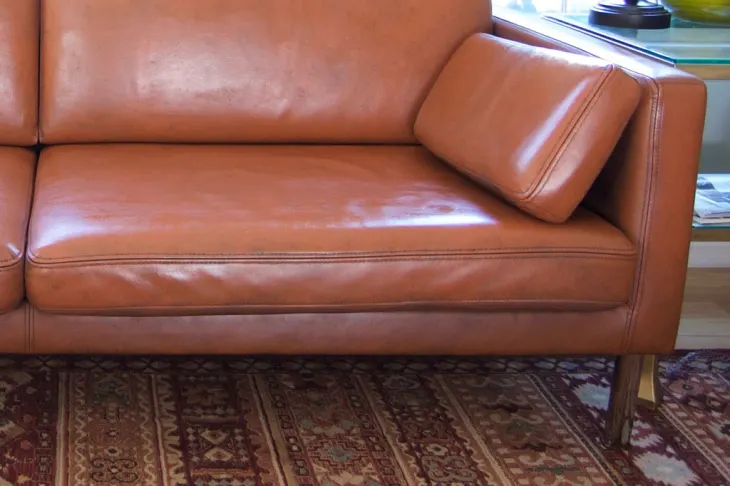An old leather sofa or chair that’s faded or scratched might appear beyond repair, but can it still be painted? Yes! With the appropriate materials and techniques it’s possible to transform old furniture into something completely different.
Leather acrylic paint, available from furniture repair shops or craft stores, as well as rubbing alcohol and fine-grit sandpaper are essential supplies.
Repairs
Leather is an extremely tough material that can withstand years of use while remaining flexible, yet like all materials it may become damaged and require repair. Holes, burns and abrasions are common problems that can be addressed with special leather fillers or patches; once this repair compound dries fully some small amount of dye may be added for color blending purposes before sealing can be applied as protection from moisture or debris damage.
Scratches on leather goods can be repaired using a leather repair compound that contains both paint and an adhesive to help the leather rehydrate quickly. Such products can be found at many leather supply stores such as Angelus, and can even be used to repair tears and scratches.
As this process can be messy, make sure to wear work gloves in order to protect your hands from paint, rubbing alcohol, deglazer and sealant stains. Also lay a large tarp or drop cloth down in order to safeguard flooring from paint or other liquids that might spill onto it.
Preparation
Bring new life to any piece of furniture by giving it a fresh coat of paint! However, before beginning this fun experience you must perform some basic preparation tasks first.
Before using leather products, start by cleaning off all dirt or dust from the surface with a damp cloth to avoid sticking to it and cracking later on.
Next, sand down any shiny surfaces to help the paint adhere better to the surface. Rubbing alcohol may also be used to strip away protective coating from aniline leather items that have been pretreated with water-resistant products or are aniline. Finally, wearing work gloves is key for keeping paint, deglazer, or deglazing solution off of your hands and to safeguard the work area – you may even wish to place down a drop cloth as protection!
Paint
Leather painting can be an intricate process that requires following a strict process in order to produce excellent results.
Painting leather furniture can be done for various reasons, ranging from matching new colors to repairing damaged pieces. Prior to beginning to paint, however, always carry out necessary repairs first – extensive damage or moldy/mildew odors could necessitate more extensive remedial action than simply painting the surface.
At this step of your project, it is also vital that you wear proper gloves in order to keep rubbing alcohol, deglazer or paint from staining your hands and staining furniture pieces. In addition, cover your piece of furniture with a drop cloth while it dries so as to avoid scuff marks and dirt as drying progresses; once dry you can add a coat of clear acrylic sealant sealant as an additional protective measure.
Finishing
If your leather furniture has become severely damaged and needs repair, sand and rub down areas with major rips or tears to help the paint adhere more securely and super glue patches over it. Any remaining gaps may need heavy leather filler before dyeing it to blend in seamlessly with its surrounding color palette.
Once your newly painted leather furniture has undergone any necessary repairs and you are pleased with its overall appearance, it is time to apply a sealant that will prevent its color from flaking off in time. Matte finish sealants may provide more natural looking leather-like appearance while gloss sealants offer shiny and reflective leather surfaces.
Once the sealant is applied, allow your furniture to dry in an area with plenty of airflow and proper ventilation.


